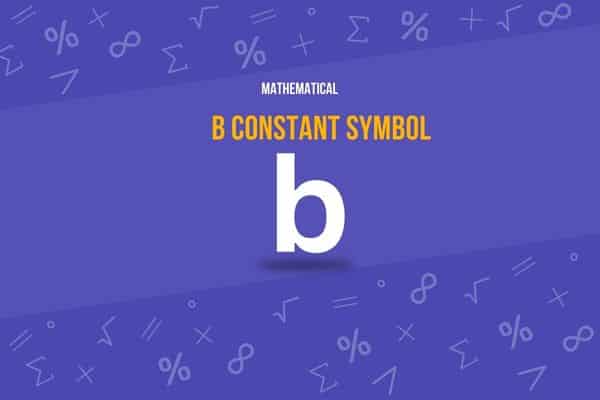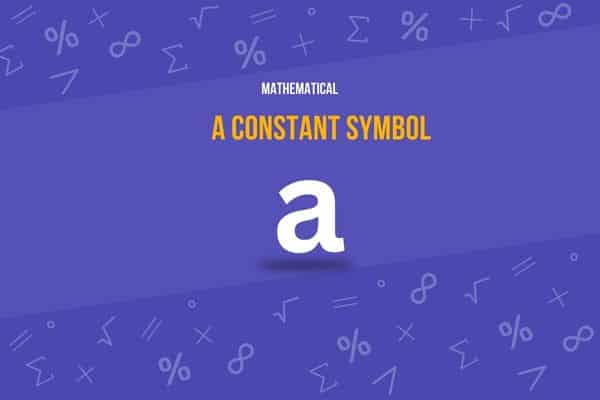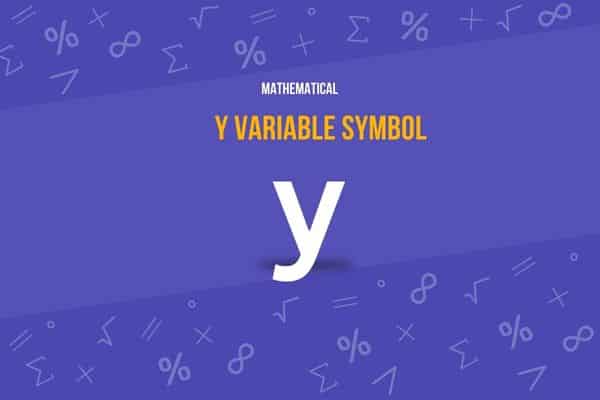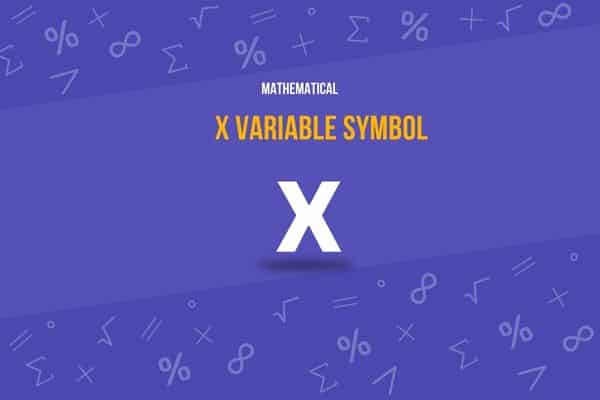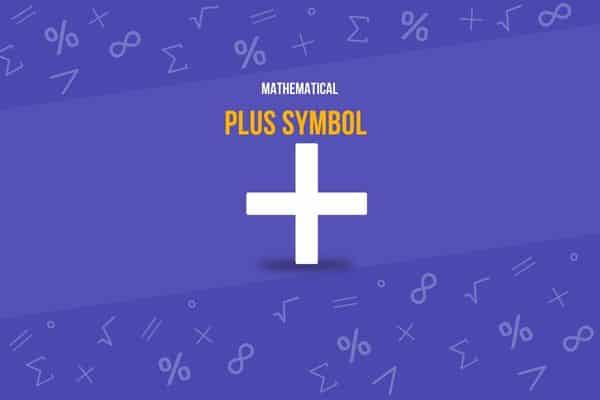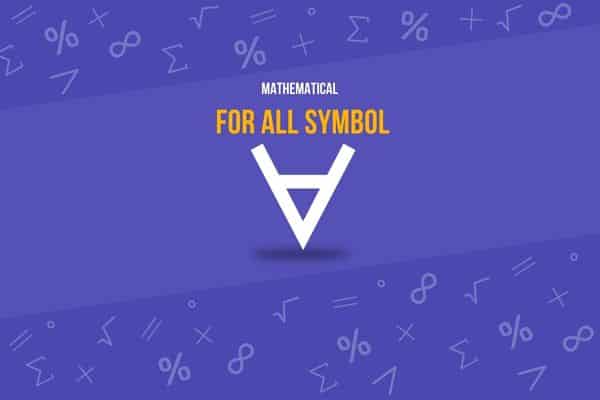What is the Greater Than Symbol?
Do you ever ponder the mighty ‘greater than’ symbol, “>,” so prevalent yet quietly enigmatic? Is it merely a signifier of comparison, or could it possess hidden layers waiting to be uncovered?
Just think of the countless times you’ve encountered this symbol in mathematics, computer programming, logic, and everyday communication. Yet, do you truly know it in depth? It’s more than time to uncover the stories, uses, and complexities behind this seemingly simple symbol.
Let’s get started!
Fast Facts
>
Greater Than Symbol
Greater Than Symbol (>) Overview
Here’s a detailed table that provides comprehensive information about the Greater Than symbol (>):
| Attribute | Value |
|---|---|
| Symbol Name | Greater Than |
| Unicode | U+003E |
| Image | > |
| Brief Description | Used to indicate that one value is larger than another. |
| Unicode Version and Date | Unicode 1.1 (June 1993) |
| Unicode Block Name | Basic Latin |
| Plane | BMP (Basic Multilingual Plane) |
| Script | Common |
| Category | Symbol, Math |
| Bidirectional Class | Other Neutrals (ON) |
| Combining Class | 0 |
| Character is Mirrored | No |
| HTML Entity | > or > |
| CSS | \003E |
| UTF-8 Encoding | 3E |
| UTF-16 Encoding | 003E |
| UTF-32 Encoding | 0000003E |
| ASCII Code | 62 |
Here’s What You Will Find
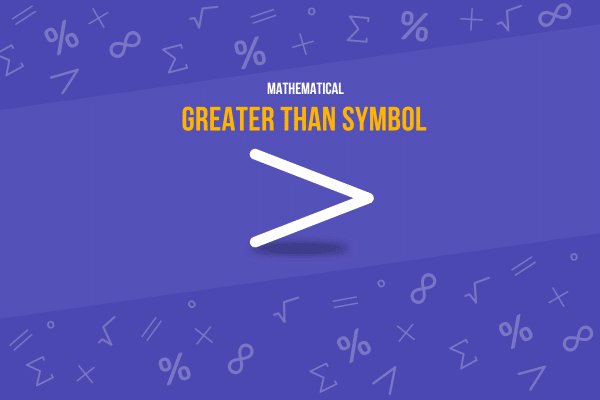
Greater Than Symbol
The Greater Than symbol “>” is a mathematical symbol that means the value on the left is larger than on the right. This simple yet crucial symbol helps determine relationships between quantities, facilitating countless mathematical and scientific computations.
But its utility extends beyond pure mathematics. The Greater Than symbol is instrumental in developing conditional statements, comparison operators, and stream operators in computer programming.
Moreover, the Greater Than symbol can express preferences or opinions in everyday communication. Despite its apparent simplicity, the Greater Than symbol is a fundamental tool in various fields, from education to technology, underscoring its vast influence and importance.
Other Names
The Greater Than symbol “>” is known by several names across different fields. In mathematics, it’s often called the inequality symbol due to its frequent use in representing inequalities between numbers. In computer science, where it plays multiple roles, it might be referred to as the right angle bracket when used in coding languages like HTML and XML.
When used in social media or texting, the symbol is sometimes called the ‘arrow’, directing the reader’s attention towards a specific item or idea. Interestingly, it’s also called the ‘chevron’ in specific contexts. As you can see, this symbol wears many hats, and its name can change depending on the particular use or field of study.
Greater Than Symbol Meaning
The greater than symbol (>) is a fundamental mathematical symbol that compares two values. It signifies that the value on the left of the symbol is larger than the value on the right. This symbol is pivotal in mathematics, enabling the expression of inequality between numbers and variables. Its usage extends beyond mathematics into areas like computer programming, which helps make decisions based on comparative conditions.
The Greater Than symbol “>” is a fundamental mathematical symbol used to express a relationship of inequality between two values or expressions. For instance, when placed between two numbers, it indicates that the number to its left is greater than the number to its right. In essence, it signifies a larger quantity or degree.
However, the symbol’s meaning extends beyond mere numerical comparison.
In computer programming, the Greater Than symbol is used to create comparison operators and, in some languages, to indicate the direction in assignment operators or to signify the end of a command. In markup languages like HTML, the symbol marks the end of a tag, helping to structure and format web documents.
Furthermore, in everyday digital communication, the Greater Than symbol is often used to express a preference or a stronger degree of something, as in “coffee > tea,” which means “I love coffee more than tea.” Despite its simple design, the Greater Than symbol holds a wealth of meanings across different contexts, making it an invaluable tool in many fields.
Symbolism of the Greater Than Symbol
The greater than symbol (>) is a cornerstone of mathematical notation and carries significant symbolic weight in various contexts. While its primary function is to denote that one quantity is larger than another, the implications of this simple mark extend into cultural, social, and philosophical worlds.
Cultural Symbolism
In cultural contexts, the greater than symbol often represents superiority and dominance. It is used metaphorically to discuss power dynamics, where one group or idea is considered “greater than” another. This usage can be seen in discussions about social hierarchies, economic disparities, or competitive scenarios, where it succinctly captures the essence of being more, better, or higher than something else.
Social and Psychological Interpretations
Socially, the greater-than symbol can embody ambitions or aspirations. It resonates with striving for greater achievements and surpassing current limits. Personal growth or self-improvement literature sometimes symbolizes the journey of exceeding one’s previous self, encapsulating the philosophy of continual improvement and the pursuit of greater goals.
In psychological contexts, the symbol might represent self-esteem or personal worth, where individuals evaluate their value as ‘greater than’ they previously perceived. This can be empowering, encouraging a positive self-view and greater self-acceptance.
Philosophical and Ethical Dimensions
Philosophically, the greater than symbol invites contemplation about what constitutes ‘greatness’. It can be used to question or affirm the criteria by which values, ethics, or actions are deemed superior or inferior. It might be employed in ethical debates to argue that certain principles hold greater moral weight than others, thus guiding decision-making and judgments.
Educational Influence
In educational settings, the symbol transcends its arithmetic roots to become a tool for motivating students. Educators might use it to promote a mindset where students are encouraged to aim for greater knowledge and understanding, symbolizing the educational journey as an endless pursuit of learning that is always reaching beyond their current grasp.
Through these various lenses, the greater than symbol is a versatile tool for expression. It goes beyond its mathematical origins to become a powerful symbol of comparison, aspiration, and philosophical inquiry, making it a significant symbol in numerical and narrative discourses.
Greater Than Symbol Unicode
Unicode is an international encoding standard that assigns unique numbers, or “code points,” to every character, regardless of the platform, device, application, or language. This system ensures that a character in any language appears the same across different platforms and applications. The universal nature of Unicode makes it a critical tool in our increasingly global and digital world, facilitating clear and consistent communication.
As for the Greater Than symbol “>”, it has a designated Unicode code point of U+003E. Regardless of your device, software, or language, if the software understands Unicode (and most modern software does), you can input U+003E, and it will display as the Greater Than symbol. This code provides a consistent and reliable way to represent the Greater Than symbol in digital media.
Greater Than Symbol Uses
The Greater Than symbol “>” is a versatile tool with many applications across numerous fields.
The greater than symbol (>) is primarily known for its role in mathematics, but its utility spans various fields and applications. This symbol helps articulate relationships and conditions in numbers, programming, logic, and everyday decision-making. Here are some of the key uses of the greater than symbol:
Mathematics
- Comparing Numbers: The most common use indicates that one number is larger than another (e.g., 5 > 3).
- Inequalities: Used in algebra to solve and express inequalities between different algebraic expressions.
- Ordering Data: Helps in the arrangement of data points or elements in ascending order based on their value.
Computer Programming
- Conditional Statements: In programming languages like Java, Python, and C++, the greater than symbol is used in logical conditions to execute specific code blocks if one value is greater than another.
- Sorting Algorithms: Essential in conditions within sorting algorithms to determine the order in which elements are arranged.
Science and Engineering
- Thresholds and Limitations: Used to set boundaries in scientific experiments and engineering designs, such as when a certain temperature or pressure threshold is exceeded.
- Measurements and Tolerances: Indicates when a measurement falls outside an acceptable tolerance range.
Everyday Usage
- Decision Making: Symbolically used in decision-making tools to weigh different options where one is considered greater value or priority than another.
- Comparative Analysis: Assists in comparing products, services, or performance metrics in business and personal contexts.
The greater than symbol thus serves a broad spectrum of applications, illustrating its versatility and essential role in both academic and practical domains. From the classroom to the computer screen, from scientific labs to everyday conversations, this symbol is a fundamental tool in expressing relationships of magnitude and priority.
In mathematics, it’s indispensable for comparing numbers and expressing inequalities, helping to determine which of two values is larger. In computer programming languages such as C++, Java, and Python, the Greater Than symbol is used as a comparison operator to evaluate whether one value is greater than another. It also forms part of other operators like the ‘greater than or equal to’ operator (>=).
Moreover, in languages like HTML and XML, the Greater Than symbol and the Less Than symbol “<“are used to enclose tags. In social media and digital communication, the Greater Than symbol is often used to indicate a direction or personal preference, such as in the phrase “pizza > burgers” to indicate a preference for pizza over burgers.
Indeed, the Greater Than symbol has an impressive range of uses, demonstrating its foundational importance in numerous domains.
Examples of the Greater Than Symbol in Use
The greater than symbol (>) is ubiquitous, finding its place in various practical scenarios ranging from elementary mathematics to complex programming. Understanding its application through examples can help illustrate its versatility and functionality in different contexts. Here are some illustrative examples:
In Mathematics
- Basic Comparison: If you have 7 apples and your friend has 5 apples, you can say 7 > 5, meaning you have more apples than your friend.
- Solving Inequalities: For an inequality like x + 2 > 5, the solution would be x > 3, indicating that x must be greater than 3 for the inequality to hold true.
In Education
- Grading Thresholds: A teacher might set a rule that scores > 90 represent an ‘A’ grade. This means any score greater than 90 qualifies for an A.
- Performance Metrics: In student assessments, distinguishing performance levels might involve statements like “Class average on test > 75% indicates above-average understanding.”
In Computer Programming
- Conditional Operations: In a programming context, a line of code might include a condition such as
if (currentSpeed > speedLimit) { issueSpeedingTicket(); }to enforce speeding rules. - Loop Break Conditions: In a loop, a break condition might be set as
while (attempts > 0) { tryAgain(); attempts--; }, where the loop continues as long as the number of attempts is greater than zero.
In Daily Life
- Financial Decisions: A budgeting decision might be framed as, “If current savings > $5000, then plan a vacation.”
- Comparing Prices: When shopping, you might compare prices by considering if the cost of one item is greater than another, such as checking if the price of one brand is greater than another before making a purchase decision.
In Scientific Research
- Experimental Conditions: Researchers might define experimental groups based on conditions such as “Group A receives dosage > 50mg” to test different responses at varying dosage levels.
- Data Filtering: In data analysis, a scientist might filter data to include only values that meet a specific criterion, like “Display all data points where temperature > 100°C.”
These examples demonstrate the greater than symbol’s crucial role in expressing relational dynamics across diverse scenarios. Whether it’s comparing numerical values, setting conditions in programming, making logical decisions in everyday life, or defining parameters in scientific experiments, the greater than symbol provides a clear and concise way to establish comparisons and thresholds.
Why is the Greater Than Symbol Important?
The Greater Than symbol “>” is critically important in various fields due to its versatility and universality. Mathematics is essential in describing relationships between numbers and solving complex equations, thus contributing to engineering, physics, and economics advances.
In computer programming, the greater-than symbol helps to form logical conditions and operators, driving the functionality of the software and digital technologies that form the backbone of our modern world. Without the Greater-than symbol, comparison operations in programming languages and mathematical equations would be impossible to express concisely.
Furthermore, everyday communication helps us express preferences or relationships quickly and efficiently. Its simplicity, universality, and widespread applicability make the Greater Than symbol an invaluable tool in numerous disciplines and everyday contexts.
History of the Greater Than Symbol
The greater than symbol (>) has a rich history that dates back several centuries. Its development is intertwined with the evolution of mathematical notation and the broader need for concise and clear symbols to represent relational concepts. Understanding the historical context of this symbol enriches our appreciation of its use and highlights the progression of mathematical communication.
Origins in Renaissance Mathematics
- Thomas Harriot’s Innovations: The greater than symbol, alongside its counterpart the less than symbol (<), was first introduced by the English mathematician Thomas Harriot. Harriot, who lived during the late 16th and early 17th centuries, pioneered in many areas, including navigation, astronomy, and mathematics. He introduced these symbols in a manuscript around 1631, which was published posthumously.
- Purpose of Introduction: Harriot developed these symbols to provide a clear and efficient way to express inequalities and comparisons between quantities. This need arose particularly from his work in algebra and his engagement with the mathematical problems of navigation and astronomy.
Spread and Adoption
- Influence of Algebraic Developments: As algebra developed and flourished across Europe, the need for a standardized notation to express inequalities became apparent. Harriot’s symbols were practical and easy to understand, facilitating their adoption by other mathematicians and in mathematical texts.
- Integration into Textbooks: By the 18th century, the symbols had been integrated into mathematical textbooks and were widely used across Europe. Their simplicity and effectiveness in conveying relational data made them a staple of mathematical notation.
Evolution of Usage
- Beyond Mathematics: While initially used primarily in mathematical contexts, the greater than symbol gradually found its way into other fields. With the advent of the digital age and the development of computer programming, the symbol was co-opted into various programming languages to perform conditional operations and comparisons.
- Standardization in Modern Times: The symbol’s design and usage have remained largely consistent since its introduction, though it has been standardized through mathematical conventions and computer programming languages. It is universally recognized and used worldwide, appearing in educational materials, technical documents, and digital interfaces.
The history of the greater than symbol is a testament to how mathematical symbols can evolve from specific scholarly needs to become universal tools used across a variety of disciplines. Its enduring presence in mathematical and scientific communication underscores its fundamental role in conveying comparative relationships clearly and efficiently.
The Symbol’s Design
- Design Intent: The symbols were designed to visually represent the concept of one value being larger or smaller than another. The symbol > resembles an arrow pointing to the smaller value, intuitively indicating that the other value is greater. This visual representation was an effective way to simplify the notation of inequalities, making it easier for mathematicians to write and communicate complex mathematical relationships.
- Symbolic Representation: The choice of a simple geometric shape—a pointed angle—was deliberate to ensure ease of use and universal understanding. This straightforward design allowed it to be quickly adopted by other mathematicians and incorporated into educational materials.
Impact on Mathematical Notation
- Standardization in Mathematical Communication: Harriot’s introduction of the greater than symbol marked a significant evolution in mathematical notation. Before the adoption of these symbols, inequalities were expressed in cumbersome and verbose language, which made mathematical writing and calculation both time-consuming and prone to error.
- Influence Across Disciplines: The adoption of the greater than symbol facilitated not only advancements in mathematics but also supported developments in fields that relied heavily on mathematical calculations, such as physics, engineering, and later, computer science.
The origin of the greater than symbol exemplifies how mathematical the need for greater efficiency and clarity in scientific discourse often drives innovation. Thomas Harriot’s contribution is a cornerstone of mathematical symbolism, reflecting both a practical response to the challenges of his time and a lasting impact on how we communicate quantitative concepts across various disciplines.
Evolution of the Greater Than Symbol
Since its introduction in the 16th century, the Greater Than symbol has remained largely unchanged in its basic form and primary use for mathematical comparisons. Its original design as a simple, straight line angled to the right has endured for centuries, a testament to its intuitive, clear representation of “greater than.” However, what has evolved significantly over time is the symbol’s application and context.
With the rise of digital technology and programming languages, the Greater Than symbol has been adopted as a crucial component in various coding syntaxes, such as forming logical conditions and HTML tags.
Modern digital communication is also used to express preferences or hierarchy. While the symbol’s fundamental shape and meaning have remained consistent, its utility and relevance have expanded significantly, making it an enduring tool in both traditional and contemporary contexts.
Greater Than Symbols in Everyday Life
The Greater Than symbol, while rooted in mathematics and computer programming, carries a philosophical essence that can be translated into our daily lives. The symbol represents the concept of ‘more than,’ an idea we can incorporate into our daily routines for continuous self-improvement and growth. For instance, we could strive to learn something new each day, aiming to be a ‘greater’ version of ourselves than we were the day before.
The symbol can also help foster a healthy perspective on life’s challenges. Instead of being overwhelmed by a problem, we can choose to be ‘greater than’ it by focusing on solutions rather than obstacles. In this way, the principles behind the Greater Than symbol can serve as a daily mantra for personal growth and positivity.
Last Thoughts
As we’ve seen, the Greater Than symbol “>” is not just a mathematical or programming tool; it’s a remarkable symbol with a rich history and diverse applications that extend into our daily lives. Its enduring presence underscores its significance and versatility. We hope this exploration has deepened your understanding of this ubiquitous symbol and sparked curiosity about the stories and meanings behind other symbols and signs.
Before You Go
Don’t stop at the Greater Than symbol; the world is full of intriguing symbols waiting for your discovery—each with its own story, significance, and surprising applications. Keep exploring and unraveling the mysteries they hold!
If you found this exploration of the greater than symbol enlightening, why not share the knowledge? Share this post with friends, family, or colleagues who might also appreciate exploring this ubiquitous mathematical symbol’s fascinating history and versatile uses.
Sharing helps others discover the intriguing stories behind everyday symbols and supports a deeper appreciation for the subtle ways math shapes our understanding of the world.
Whether through social media or a casual conversation, your sharing can ignite curiosity and learning in someone’s day!

